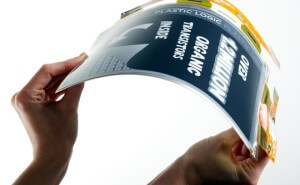 “The measure of intelligence is the ability to change”; this is a famous quotation of Albert Einstein regarding flexibility.
“The measure of intelligence is the ability to change”; this is a famous quotation of Albert Einstein regarding flexibility.
Flexibility is the ability to move through the full range of motion. It is the potential to get easily modified without breakage.
Gadget like mobile,tablets,laptops keep getting thinner day-by-day but how thin can it literally become? The answer to it is “as thin as paper”. Though incredible but it is true that a flexible paper computer was developed by Human Media Lab from Queen’s University, Canada in 2013. Collaboration of plastic logic & Intel labs has led to the foundation of such revolutionized idea of paper tabs. This flexible paper Tab was inaugurated at Consumer Electronics Show (CES) on 8th January 2013. Plastic logic’s flexible plastic displays are completely transformational in terms of product interaction, they allow a natural human interaction of electronic paper, being lighter, thinner and more robust compared to today’s standard glass-based displays.
The most significant characteristic of PaperTab is its flexibility which makes it unique in itself. “Instead of using several apps or windows on a single display, one can use ten or more interactive displays or PaperTabs: one per app in use” explains Byan Brotman, a research scientist at Intel. PaperTab can display thousands of paper documents replacing the need for a computer monitor and stacks of papers or print outs.

The gadget paper tab is highly loaded with latest technologies like resolution of 10.7” plastic display touchscreen and high bending quality. It contains second generation core i5 processor’s amazing performance, stunning visuals, and build-in security for deeper protection. Plastic technology helps in getting rid of rigid glass display & give the possibilities for extreme level bending. It is proximity smart which means each paper tab knows its location relative to other paper tab. If it is placed on the table within the reach of the user then it will show a thumbnail of a document but if it is placed beyond the reach of user then it display icons. This reflects the sensitivity of the device. This device is so interactive that multiple PaperTabs can be combined to create expanded display with drag and drop functionality between tabs. It’s interface allows the user to send a photo simply be tapping one PaperTab showing a draft email with another PaperTab showing the photo. The Email can be send either by placing the PaperTab in an out tray or by bending the top corner of the display. Works like fast-forwarding a video, turning pages of a document etc can be done just in a single bend of the display which proves an outstanding technology. Navigation through a document can be done without pressing any button using this plastic technology. The principal difference between PaperTab and an Ipad is that each display is essentially one app. We can open single app in different PaperTab which facilitates the user to do more than one work at a time such as share PDF by tapping two tablets or reading some article, chatting all at a time.
The PaperTab is not still wireless, it require power from a computer that is presumably under the desk. However in near future, we can assume it to be wireless. Within five to ten years from now, most computers from notebooks to tablets, will look and feel just like this sheets of printed colour papers.

